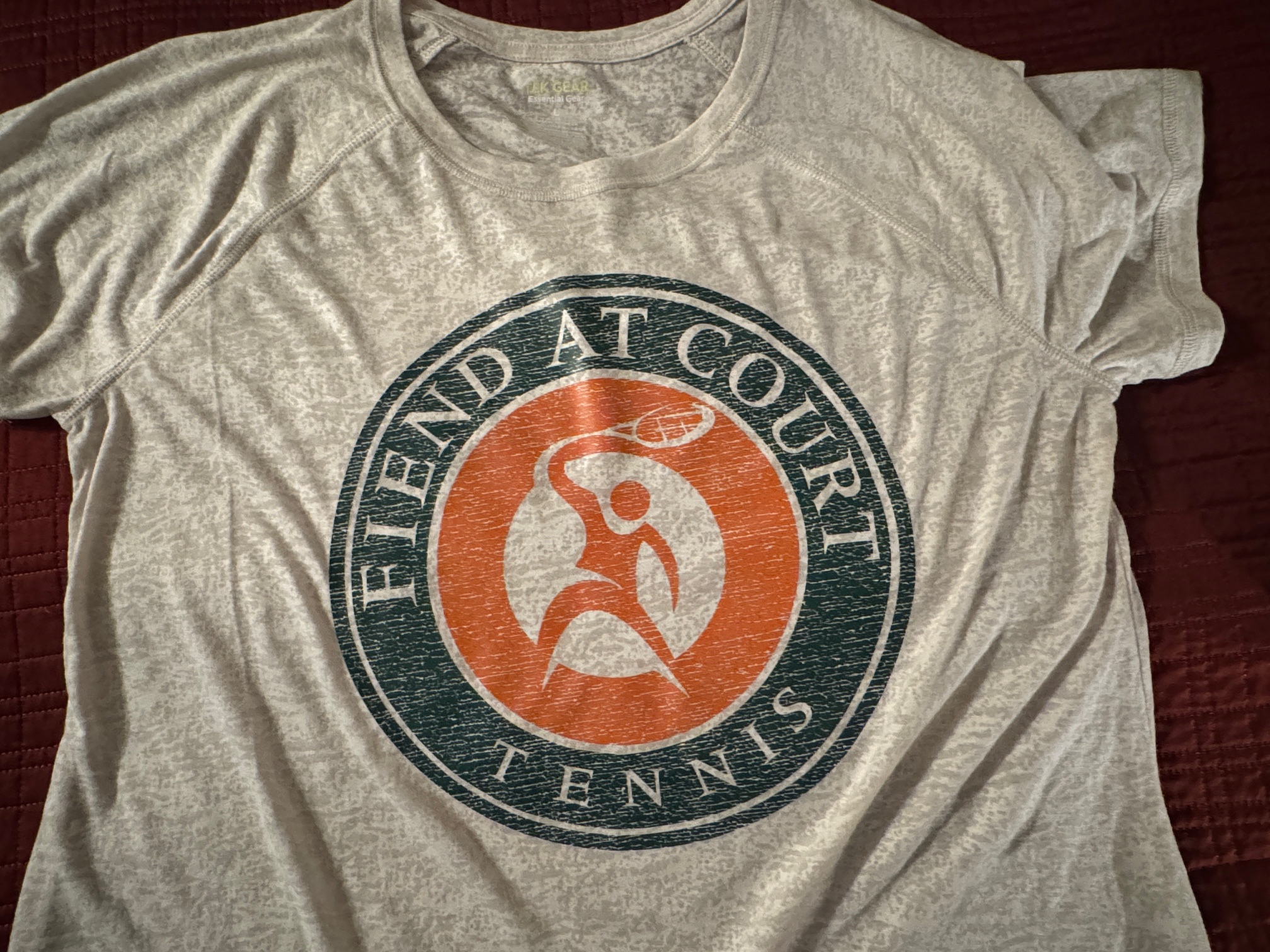Fiend at Court Unplugged
Editorial Note: If you missed “Marketing Tennis Tournaments: Consumer Analysis,” I highly recommend going back and reading that first. To save space and time I am not going to rehash information from that post again today.
Today we are transitioning over to the side of my tennis consumer analysis that addresses the people who are engaged in tennis. Further segmentation within that market are people who are engaged in tennis in a non-playing capacity and people who play tennis. I drew a Venn diagram of these two segments acknowledging that there is some degree of overlap between those two groups.
As I indicated yesterday, the picture provided with this post is my unedited first attempt at putting pen to paper. One revision that I would make on a second cut is to change the label “spectating” to “non-playing.” There are some people that are heavily involved tennis who more than merely spectate. For example, I am aware of several USTA officials and sports writers who focus primarily on tennis who do not play the sport.
The reason I originally gravitated to the term “spectating” is because it is the target demographic of the majority of current tennis marketing. Organizations that promote tennis to spectators includes the Tennis Channel as well as the ATP and WTA professional tours. I would also lump in the USTA’s promotion of the US Open in as marketing to that segment as well.
There are some spectators of tennis who will never cross the divide to playing tennis. The umpire who gave birth to me was an avid player back in the day. However, following shoulder and hip replacements, her balance has degraded to the point where the thought of her attempting to play tennis is terrifying. She’s now firmly ensconced in the spectator category.
I should also observe that I know of quite a few active tennis players that don’t give a rip about the professional game and rarely watch a televised professional match. Marketing to that target demographic can’t effectively be done over broadcast media of live tennis events.
I further divided the non-playing and playing population of people who are engaged in tennis by the intensity of that involvement. The reality is there is a wide spectrum of intensity. I would think that taking the population of people who are casually involved with tennis and getting them to catch fire would be an imperative of a tennis marketing campaign. I mean, super fans is really the ultimate objective whether that fandom is spectating or playing.
The diagram illustrating the tennis market segmentation is necessary to understand that the way tennis is marketed should vary across those constituencies.
Marketing to People Outside of Tennis. The traditional channels for promoting tennis are out of play for this demographic. They simply are not engaged in tennis in any meaningful way. For the USTA to effectively market to this constituency, efforts should be focused bringing people into some state of engagement with tennis. This represents the single biggest opportunity for the USTA to “Attract, Engage and Retain a New Generation of Diverse Tennis Participants.”
Marketing Tennis to People Casually Engaged in Tennis. The USTA’s traditional marketing channels will reach some, but not all of this demographic. These are people who are watching and/or playing tennis occasionally. Marketing efforts to this segment should be focused on increasing the player’s frequency of engagement with tennis activities.
Marketing to Tennis Super Fans. While this segment is already squarely in the sweet spot of desired USTA engagement in tennis, they can not and should not be neglected. Retaining a consumer is almost always less effort than gaining a new one. This segment needs to be encouraged and reminded that they are ambassadors of the sport. Thus, marketing to this group should promote and encourage sharing the game with others.
At the bottom of the card, I ended with the question “But what is playing?” I want to re-frame that as “what is engagement?” I understand the USTA focus on tournaments and league play as engagement in tennis because that is the predominate mechanisms of engagement. However, there are opportunities to expand the aperture to other forms of engagement that are also in alignment with the objectives of the USTA.
I started down this path from the announcement of the 2021 USTA Adult Tournament Changes and the claim that it was necessary to make it easier to market tennis tournaments. I assert that those efforts should necessarily be focused on people who are engaged in playing tennis but for whatever reason do not engage in tournaments.
As I wrote about in “Tennis Participation: Leagues vs Tournaments,” there is a fundamental psychological difference between the League and Tournament players. Additionally, the observation from Anthony Tatu shared previously that the preponderance of league playing opportunities is a significant competitive force working against tournament participation continues to resonate in my thinking.
To invoke an analogy from golf, transitioning someone who is outside of tennis directly into tournaments would be like trying to hole out on a par 5 from the tee box. Marketing efforts along those lines would most likely not produce an effective return on investment. Transitioning an existing league player or a casual recreational tennis player to a tournament would be a much shorter putt. This is where I assume effective marketing efforts would be concentrated.
After going through all this, I believe that that the new tournament structure is most likely targeted at transitioning casual and league players over to tournaments. Conceptually, I understand that demographic would probably be more likely to engage in shorter format local events. I would feel better about the initiative if the assumption that shorter formats would be more appealing was backed up by tennis specific consumer research.
None of this explains why the elimination of mixed doubles from NTRP tournaments is necessary. Nor does it account for why apparently there will be no tournaments in 2021 that co-mingle NTRP and Open events. Those are mysteries to solve another day.

- Fiend at Court Request, July 21, 2020, (Official response to emailed questions.)
- 2021 Adult Tournament Changes, USTA National Webinar, undated.
- USTA Adult Tournament Changes for 2021, USTA National Website, viewed 7/25/2020
- USTA Announces Sweeping Plan to Reorganize and Prioritize Its Structure, Events, and Activities to Grow the Game and Service the Broader Tennis Industry, USTA Official Press Release, hosted on Open Court website, viewed 8/2/2020.



